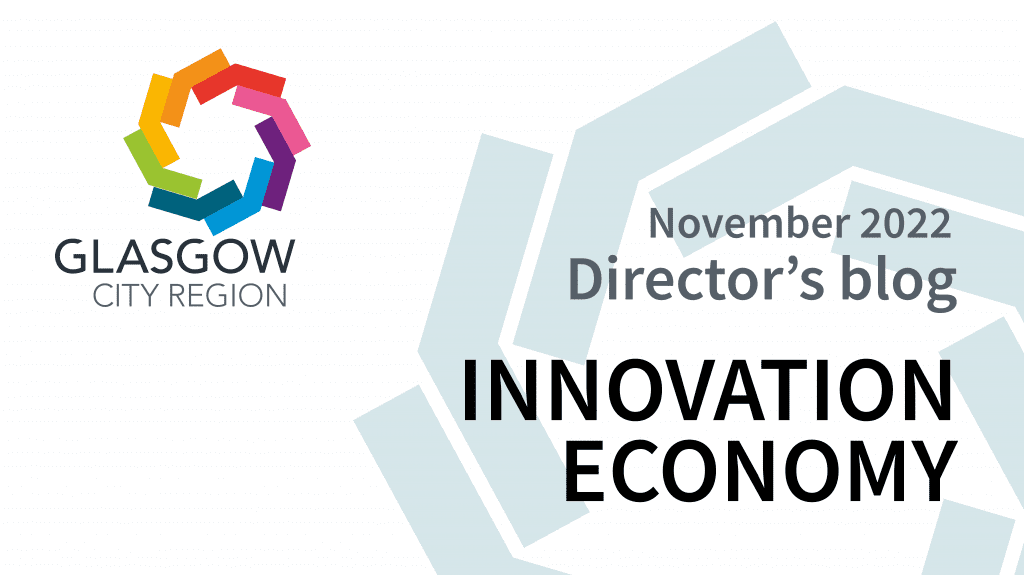Accelerating our Innovation Economy
This month I wanted to focus on plans for our new Innovation Accelerator and on the many reasons why Glasgow City Region (GCR) has been selected as one of three pilots to share £100 million funding, as part of the UK Government’s Levelling Up plans.
Glasgow has a gift for industry and innovation. From James Watt’s efficiencies to the steam engine that drove the industrial revolution to our place as a 19 and 20th century second city of the empire, building and exporting Clyde-built ships and locomotives globally. It is in our DNA.
Today we need to be at the forefront of the fourth industrial revolution, to attract inward investment, compete with other European regions and tackle our key economic challenges, including the vast issue of climate change.
GCR is already a base for an impressively wide range of world-class science and technology expertise. A runner-up for the European Capital of Innovation Award, the Region benefits from commercial edges in nano tech, fintech, life sciences, digital media, energy and advanced manufacturing. It is also a global capital for the space and satellite industry. All these sectors are well served by the Region’s strong technology platform, wide skills base and significantly lower labour costs than London.
The Region is home to three world-class Innovation Districts, five Innovation Centres, four Catapults and three Public Sector Research Establishments.
We are also leading the way in supporting inclusive digital innovation, with ambitions for a Community Digital Lab that will bring together academics, tech experts and local communities to address the significant innovation constraints that prevent SMEs from competing with big tech companies in developing new apps.
Related key sectors also complement our thriving tech and innovation economy.
In the past ten years, the Glasgow bio-corridor has supported the growth of med tech, pharmaceutical services and industrial biotechnology, and contributed significantly to the Scottish life sciences offer. The corridor spans 50 miles, with Glasgow’s universities, research institutes and hospitals at its heart, encompassing more than 10,000 people working in 230 life sciences companies.
Glasgow is also Scotland’s leading centre of economic activity within the screen sector, with a recent independent report recognising film and TV contributing over £265 million to the Region’s economy and creating over 4,500 jobs. BBC Scotland and STV are both headquartered in Glasgow on the Clyde. The Channel 4 Creative Hub, one of two across the UK, is based in the Merchant City and a new £12 million 10,500 sq. ft. film and TV studio recently launched at the Kelvin Hall, operated by the BBC’s commercial arm.
Innovation Districts
A worldwide economic development phenomena, the Innovation District model is actively transforming the way industry, academia and businesses collaborate.
Commercialising existing university and hospital-based research, innovation and talent and successfully drawing extensive funding and investment, they create new, high wage and high productivity jobs, and by their nature attractive places to live, work and do business.
Unlike many European metropolitan areas, UK city regions tend to underperform in terms of productivity. In fact, despite being Scotland’s largest conurbation, and one of the UK’s major urban centres, GCR underperforms against Scottish and UK productivity averages.
Innovation Districts are an important policy tool to help us to increase productivity, one of our key economic challenges. By capitalising on our large research-intensive universities and distinct talent pool, we have an ideal base from which to develop a higher productivity trajectory, promoting innovation and innovation skills in existing, new and inward-investing companies and encouraging more highly skilled people to live and work in the Region.
Innovation Districts are also an effective way of regenerating urban areas. In fact, our three Innovation districts have all been shaped and underpinned by significant investment from the UK and Scottish Government funded City Deal. To date, almost £0.5 billion has been invested or committed in the Region’s three Innovation Districts, all clustered in a corridor along the River Clyde.
Glasgow City Innovation District (GCID)
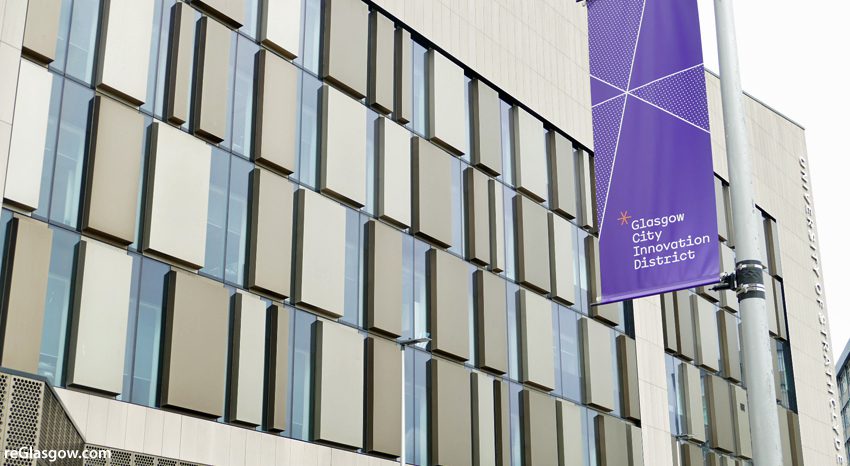
Overview:
Scotland’s first innovation district, located in the heart of Glasgow city centre is a partnership between the University of Strathclyde, Glasgow City Council, Scottish Enterprise, Glasgow Chamber of Commerce and Entrepreneurial Scotland. The construction of the University’s Technology and Innovation Centre (TIC) and Inovo business engagement building and the City Deal funded Tontine business accelerator were the building blocks of the district’s rapid growth and expansion.
Clusters of activity: 5G & advanced communications, fintech, health tech, industrial informatics, quantum and space.
Home to:
- > 1,600 firms including M Squared Lasers, Incremental, AND Digital.
- four UK Catapult Centres
- four Scottish Innovation Centres
- three UK Public Sector Research Establishments
- UK HQ for Europe’s largest contract research company
- the Met Tower – recently acquired by Bruntwood SciTech which will be a new tech and digital hub.
City Deal funding: To improve transport connectivity and public realm; deliver new homes, hotels and commercial space at adjacent vacant and unused sites.
Highlights:
The Technology & Innovation Zone, forms the core of the district, centred on the University of Strathclyde which has strengths in energy, enabling technologies and pharmaceutical manufacturing innovation. With the TIC and Inovo both at 100% occupancy, expansion is planned to double the footprint and create innovation space with bespoke offices, labs and demonstrator space through the Charles Huang Advanced Technology and Innovation Centre.
Glasgow Riverside Innovation District (GRID)
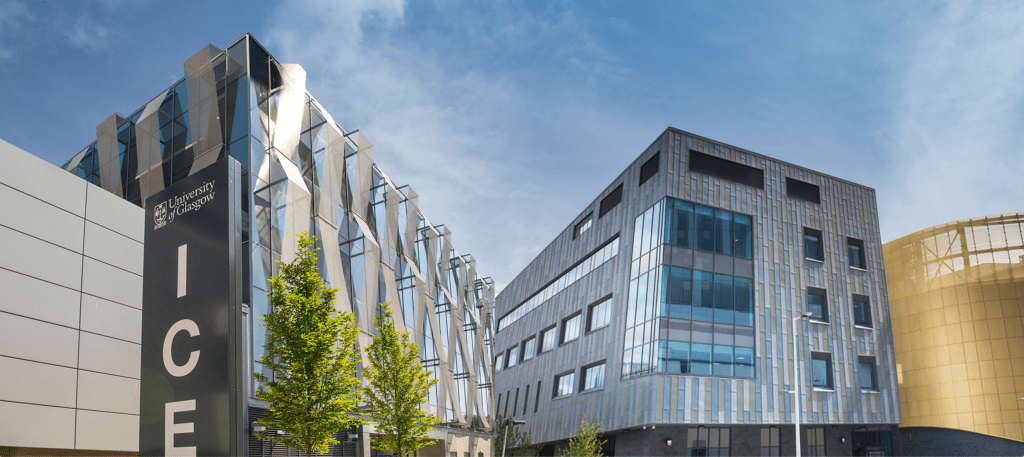
Overview:
A partnership between the University of Glasgow, Scottish Enterprise and Glasgow City Council, GRID spans a corridor from the University of Glasgow in the west end, down to and across the river up to the Queen Elizabeth University Hospital (QEUH) campus. While host to numerous economic, cultural and creative assets, much of the area is also home to deep-rooted deprivation and historical industrial decline, with the river seen as a significant barrier and a base to large tracts of vacant land. To this end GRID is driven by cocreation and engagement to promote inclusive growth.
City Deal funding: £113 million to improve connectivity and unlock vacant and derelict land development potential, including a new bridge between the two distinct communities; £16 million towards the Imaging Centre of Excellence and £27 million for the Living Lab.
Clusters of activity: precision medicine, clinical testing, healthcare innovation, creative and cultural and tech start-ups.
Home to:
- £120m Advanced Research Centre housing > 500 leading-edge researchers
- £1bn QEUH, the largest teaching hospital in western Europe.
- The Precision Medicine Living Laboratory
- The Lighthouse Lab hosted the UK’s largest diagnostic Covid testing centre
- The INTO University widening access partnership with Govan schools
Highlights:
The QEUH places Glasgow at the forefront of healthcare innovation, with dedicated facilities for the pharmaceutical industry and SMEs to engage with clinical academics and NHS clinicians: £32 million investment in the world-leading Imaging Centre of Excellence to boost precision medicine research with state-of-the-art imaging equipment in a clinical setting.
The £100 million Clyde Waterfront Innovation Campus (CWIC) will be a centre of excellence for new life science discoveries and initially bring 450 new jobs to Govan through the Precision Medicine Living Laboratory Health Innovation Hub and will accelerate the translation of cutting-edge science and healthcare innovation into routine clinical practice, improved health outcomes and NHS savings.
Advanced Manufacturing Innovation District Scotland (AMIDS)
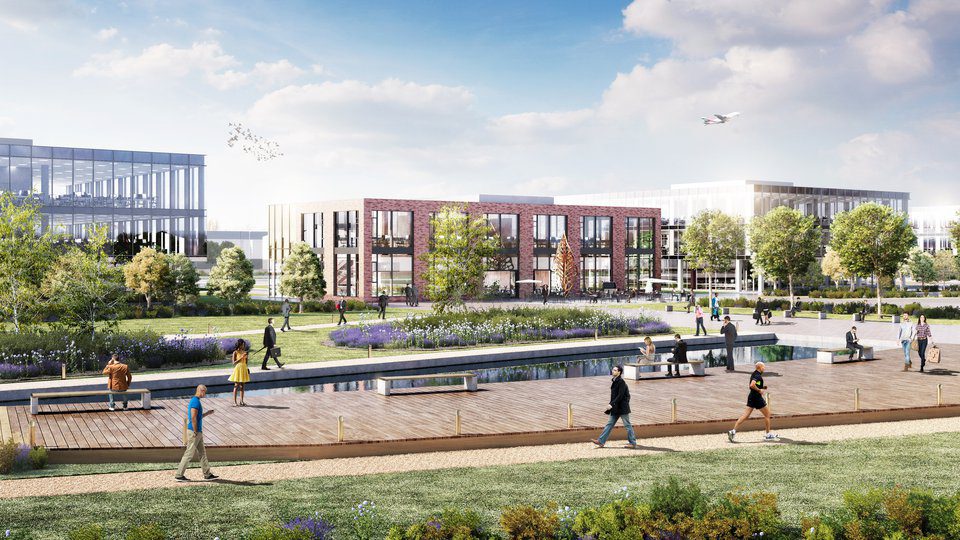
Overview:
Led by Renfrewshire Council in partnership with Scottish Enterprise, AMIDS is Scotland’s home of manufacturing innovation. Located in Renfrewshire, adjacent to Glasgow Airport, it benefits from access to a highly skilled Regional workforce and attractive lifestyle offer.
City Deal Funding: Enabling infrastructure and improved connectivity to nearby commercial centres, the town centre and to the wider Region via the first opening road bridge over the River Clyde.
Clusters of activity: advanced manufacturing
Home to:
- £65m National Manufacturing Institute Scotland (NMIS)
- University of Strathclyde Advanced Forming Research Centre (AFRC)
- £56m Medicines Manufacturing Innovation Centre.
- £9m Lightweight Manufacturing Centre, CPI
- NMIS Boeing
- Rolls Royce, Thermo Fisher, Doosan Babcock, Peak Scientific, Malin Group
Highlights:
The National Manufacturing Institute Scotland Group supports ground-breaking manufacturing research to transform productivity, make companies more competitive and boost the skills of the country’s current and future workforces.
The Medicines Manufacturing Innovation Centre, CPI will develop the medicines manufacturing processes of the future, enabling a more agile, responsive medicines supply chain through improved manufacturing processes.
Innovation Accelerator Programme
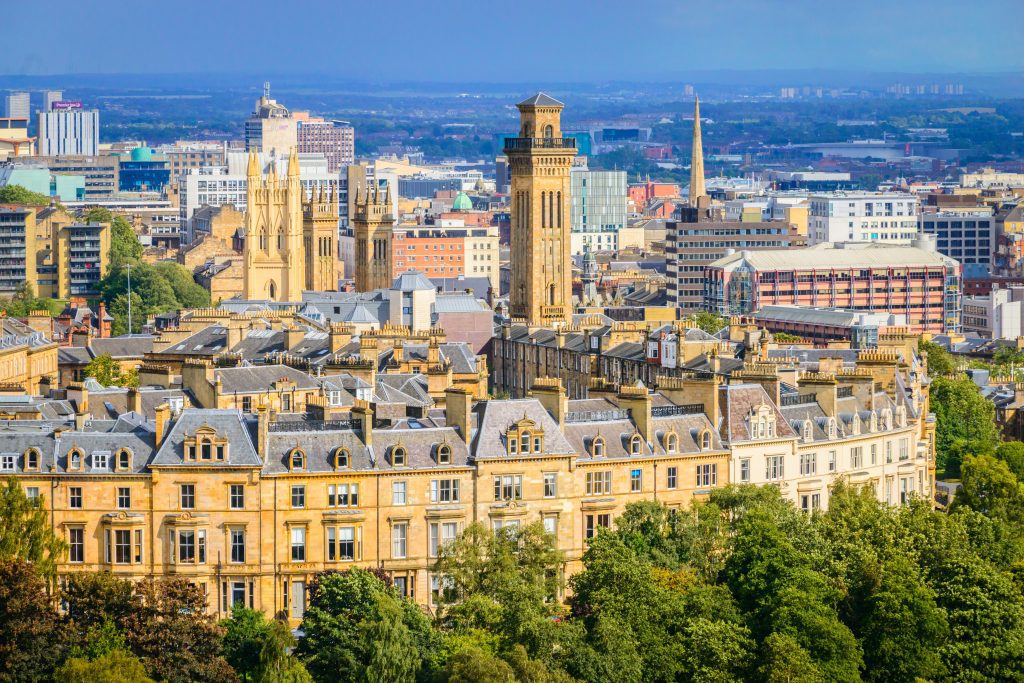
The scale of Glasgow City Region’s innovation economy already ranks it as a location of Scottish, UK and international significance.
Our recent selection by the UK Government to be one of three UK pilot Innovation Accelerators, alongside others in Greater Manchester and the West Midlands, is affirmation of this, and we greatly appreciate this vote of confidence.
Our Investment Plan proposals for the Innovation Accelerator Programme set out our longlist of projects that will be shortlisted for a share of the £100 million funding and which will be announced early next year. The proposals were shaped by a detailed assessment of our local innovation strengths and opportunities, overseen by the private sector led Innovation Partnership, chaired by John Howie of Babcock.
Our project proposals are also aligned to the four principles set by the UK Government which are to encourage good partnership between the public, private and academic sectors; to support economic growth through innovation; to leverage private sector funding and to accelerate our existing strengths.
The Innovation Accelerator provides us with a fantastic opportunity to build on progress made in recent years and to turbo charge a massive step change in the Region’s innovation economy and performance –to the benefit of Scotland and the UK. It will be transformational for jobs and skills, generate unprecedented private sector investment and will tackle some of our greatest economic challenges.
View all of our Director’s Blogs here.
